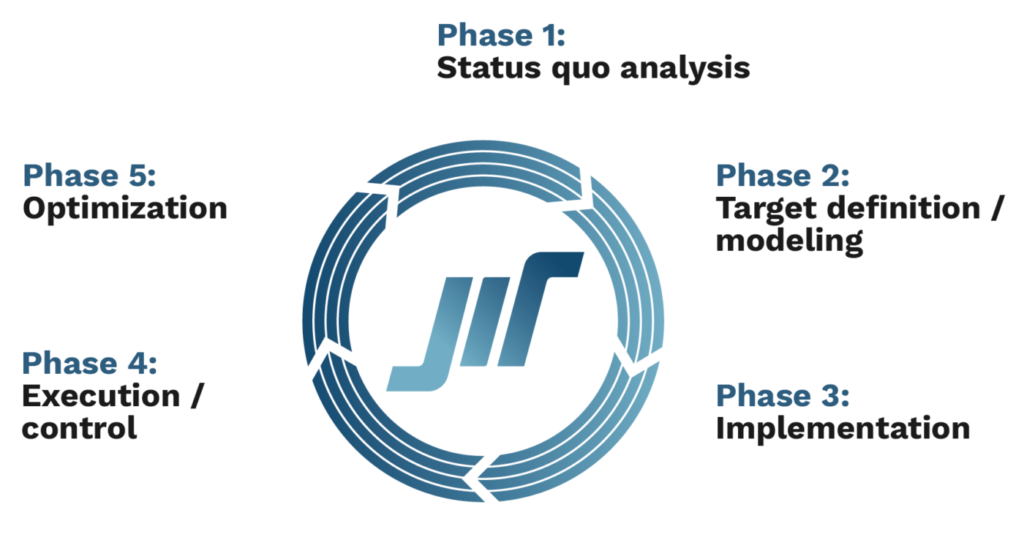Easy to use, intuitive and nonetheless extremely powerful – the future of workflow automation.

- Workflows that are easily legible for man and machine alike
- Open platform
- Simple scalability
- Central management of process automation
- Monitoring, analysis and auditing of business processes
The software platform for workflow and decision optimisation by Camunda sets store by open standards, is open source, is ridiculously easy to operate and remains unparalleled in its performance capability. What is more, these tools make it incredibly easy and pleasant to work together within IT teams and with other participants on the automation of business processes.
Keep it simple – it’s this easy to model using Camunda workflows.
With Camunda BPM, modelling workflows is incredibly easy. BPMN 2.0 allows you to create graphic workflows that can be intuitively understood even without much prior knowledge. The automation of theseworkflows makes it possible to effectively optimise business processes and fast-tracks the task of troubleshooting.
“We support your efficient planning and the ongoing optimization of your business processes.”
Thorsten Guggenberger
(CEO)
The specialist for Camunda and workflow automation
Workflow automation is one of JIT’s core competences, and is an area in which we have already come up with a large number of individually tailored solutions for our clients. With our expertise, we will be more than happy to support you in harnessing the workflow automation by Camunda to make your company more competitive and more efficient. With us, you are guaranteed to receive software licences from our partner company Camunda at the best price.
Find out more about JIT & Camunda
About Camunda Licences
Camunda Visualizer for Celonis
Workflow Automation Cycle
All About the Workflow Automation Cycle
JIT´s integrated workflow automation solutions support the ongoing optimization of personnel-related and system-based processes in a continuous improvement cycle, throughout the entire process life cycle.

Phase 1: Status quo analysis
- In-depth investigation
In-depth recording and analysis of all value-adding core processes and all supporting management processes. - Holistic view
Cross-departmental process thinking prevents blinkering, island thinking and black box niches in the company.
Phase 2: Target definition / modeling
- Optimized budgeting
We use open source solutions to minimize your entry costs. - Integration into existing system landscapes
JIT experts will quickly and seamlessly integrate the required new solutions into your existing system landscape, provided it is feasible. - Step by step towards success
Integrations into system and process landscapes are done in defined steps to ensure a smooth changeover.
Phase 3: Implementation
- Map & execute tasks
Modular design allows seamlessly integration of manual and automated tasks into existing and new processes. - Scalability
The automated execution of processes makes it easier for your company to scale up if necessary.
Phase 4: Execution / control
- Historization
Automatic, detailed logging of all activities. - Audit
Precise historization ensures the required data are available at all times - Traceability
Automatic logging of the process instances provides a complete overview of all individual processes. - Efficient planning
The traceability of the processes and their automatic logging helps to, e.g., manage employee-related resources more efficiently. - Documentation of the processes
BPMN diagrams, which are used to map the processes, are also ideal as process documentation for the various specialist areas. - Knowledge transfer in the company
All processes in your company are transparently represented in the process models and available for knowledge transfer at any time.
Phase 5: Optimization
- Simplified controlling
Automated records make controlling in your company easier. - Ongoing improvement
The use of the latest technical standards for the notation of your processes lowers your costs, increases your time efficiency gives you flexibility and agility in the management and optimization of multiple processes. - Benefits for certifications
Our BPM standards ensure full transparency. This makes it easier to meet quality standards, e.g. as part of an ISO certification.










